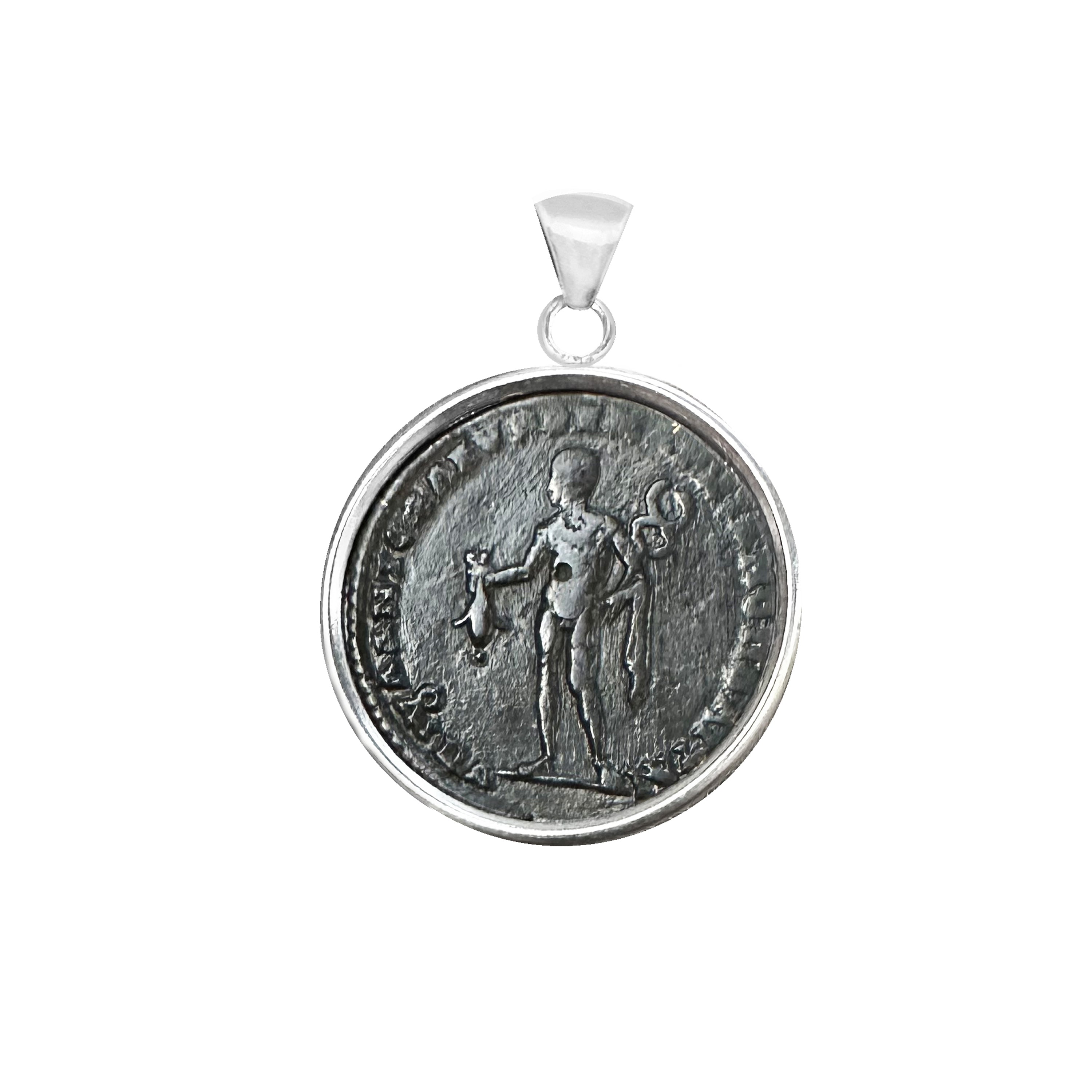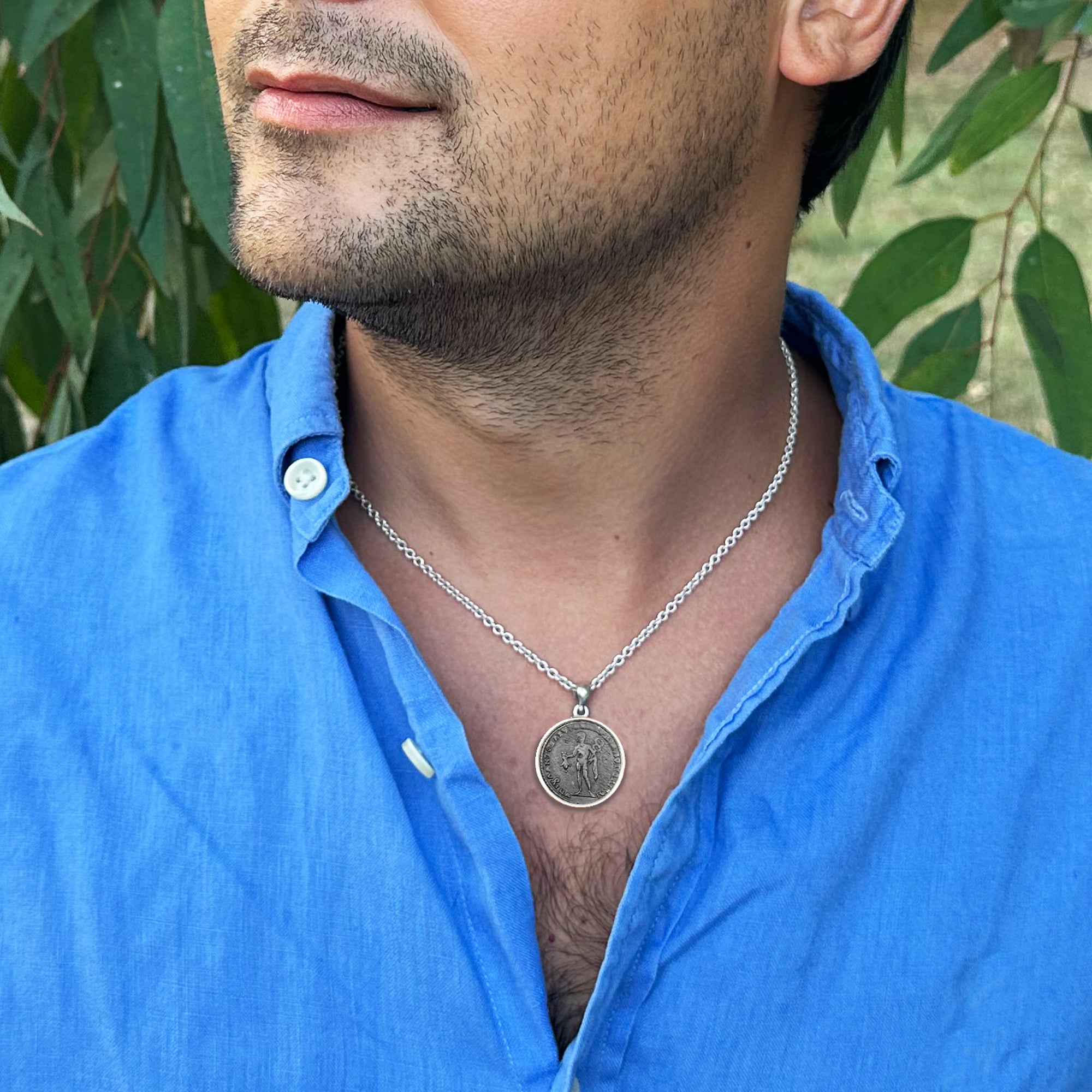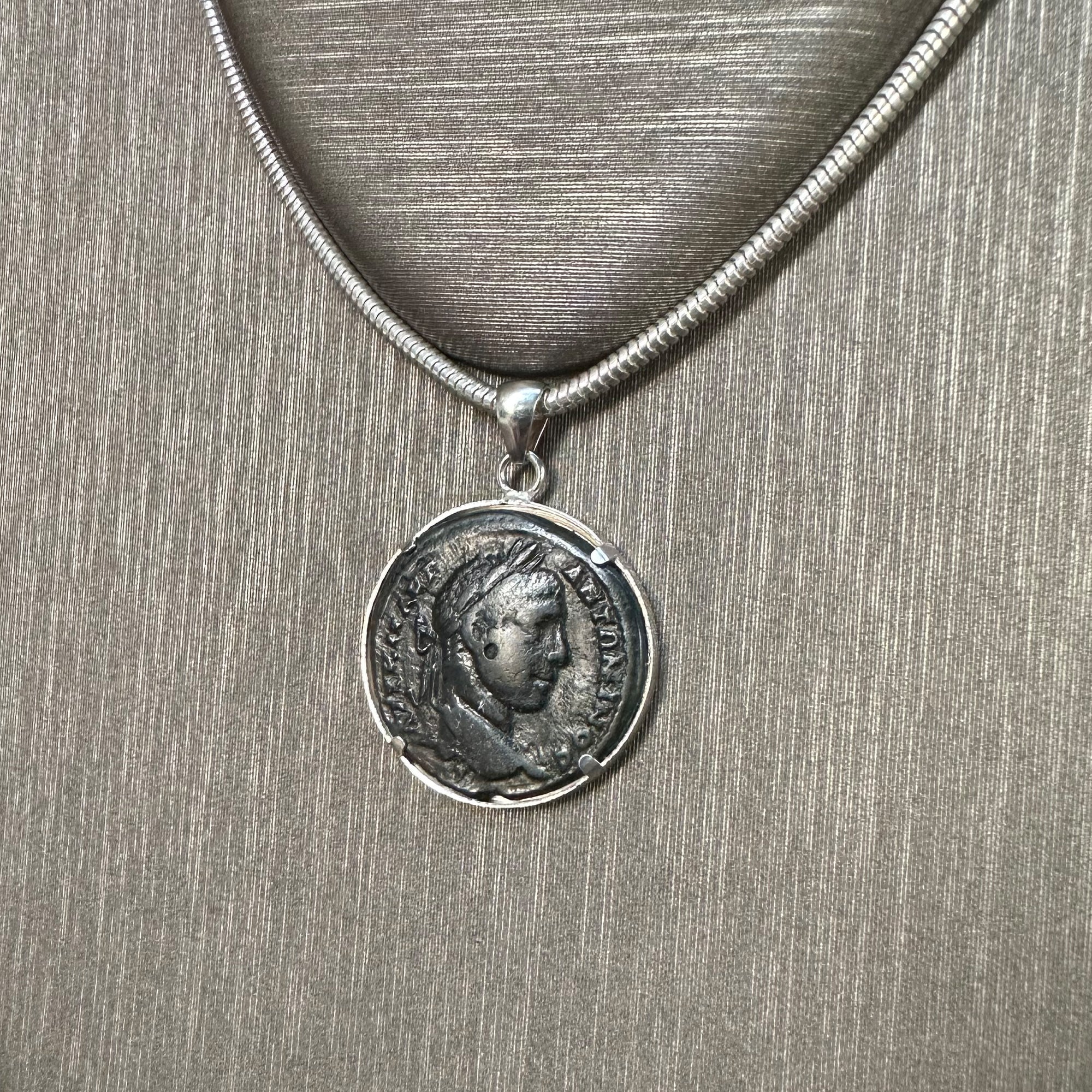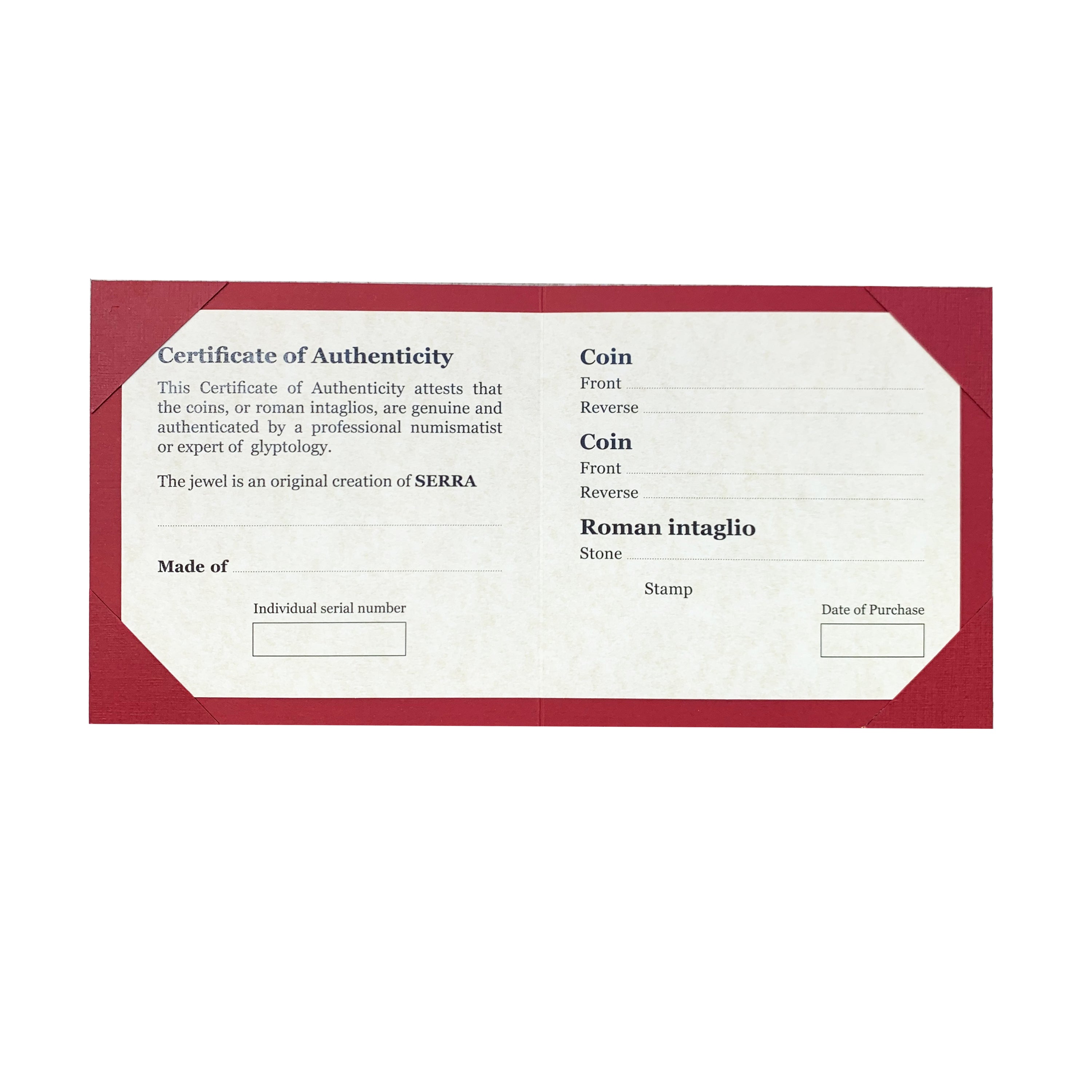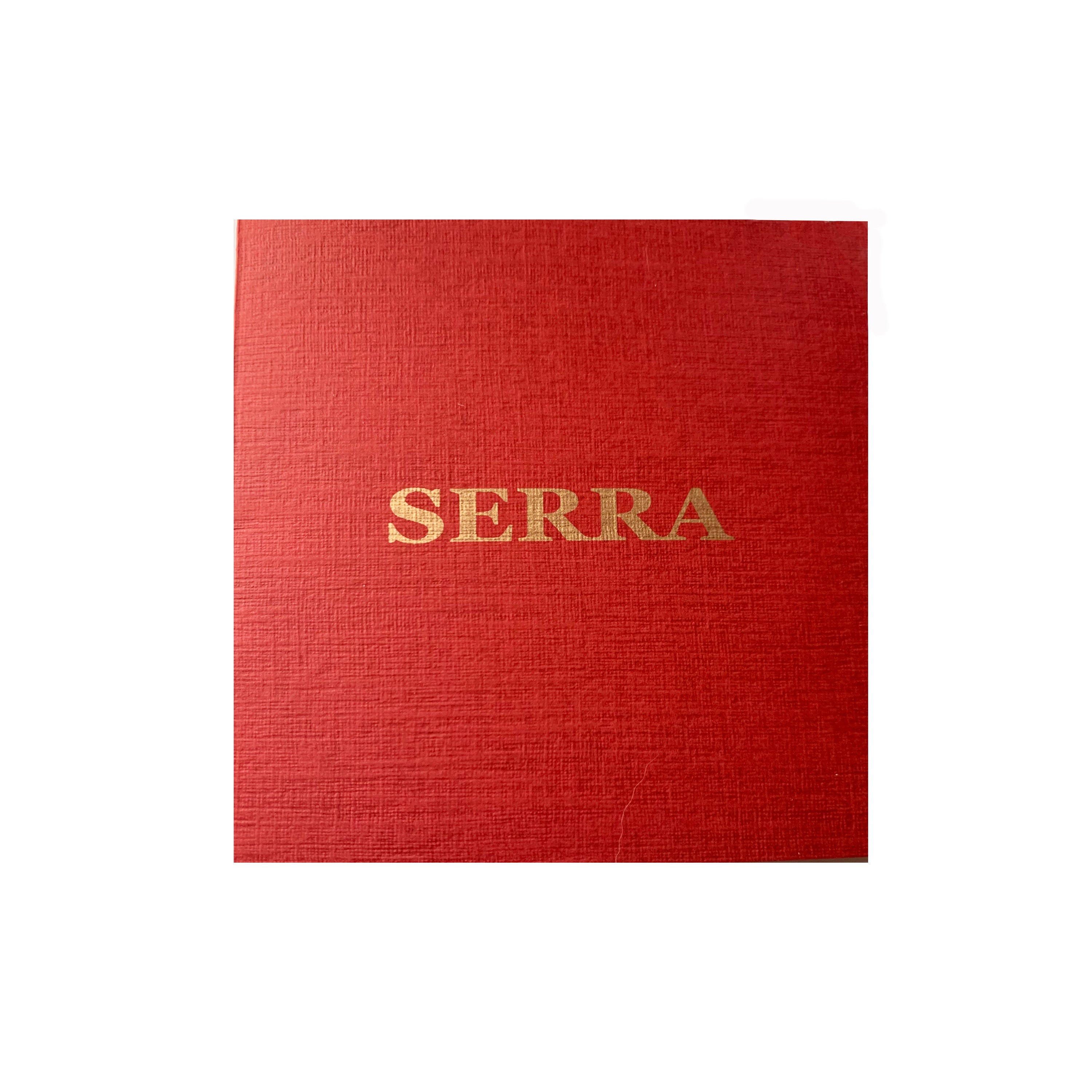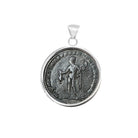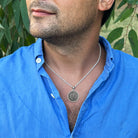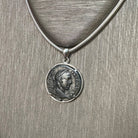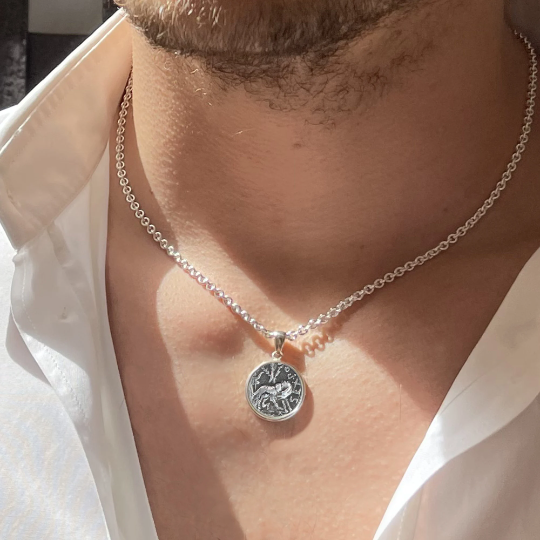GOD MERCURY Genuine Ancient Roman Bronze Coin 3rd century AD Pendant
This sterling silver pendant is an exquisite piece, featuring an authentic Roman coin from the 3rd century AD that showcases the god Mercury, who is identified with Hermes in Greek mythology. The coin's imagery is captivating, with Mercury holding a caduceus in his left hand and a pouch of money in his right, symbolizing his role as the guardian and protector of merchants and commerce. On the reverse side of the coin, one can find the bust of Emperor Elagabalus, providing historical context to this unique artifact.
In the realm of Greek mythology, Mercury, or Hermes, was a deity of remarkable versatility and influence. He was revered as the messenger of the gods, facilitating communication between the divine realm and mortals. Moreover, Hermes held the esteemed title of guardian of travelers, ensuring their safety on journeys and offering guidance. His role extended to various domains, including oratory, poetry, literature, commerce, and the realm of cunning, making him a multifaceted and revered figure.
A distinctive attribute of Hermes was his Caduceus, a staff adorned with intertwined serpents. This symbol represented not only peace but also commerce, reflecting the deity's influence in these areas. Additionally, Hermes was known for his winged sandals called Talari, which granted him extraordinary speed in his missions. The god was also equipped with a magical cloak, which rendered him invisible, enhancing his mystique and enigmatic presence.
Our jewelry store, Serra Roma, proudly presents an exquisite collection that beautifully honors the ancient traditions of Greek and Roman civilizations. Each piece in our collection, including authentic ancient Roman and Greek coins and intaglios, is accompanied by a certificate of authenticity, providing proof of its historical significance and origin.

